I have a LM317 setup as a 3.3V regulator. I am getting 12V input from an Agilent Technologies E3631A Variable DC Power Supply. On this same board I also have a LM7805 regulating to 5V. All of my grounds are connected together.
My problem is with the 3.3V line. When I measure the line with my fluke, it reads 3.63V. Way above where the regulator should be putting the line. However, when I hookup the ground line from my osciliscope cables to the ground on the board, my multimeter reads out 3.31V (within the expected range). Why is this line floating so high, and how can I fix it?
As a side not, the Power Supply does have a ground terminal. I tried using that with the board instead, but when measuring the voltage from V+ on the power supply to earth ground. I get a varying range of small voltages (not the 12V that the power supply is putting out). Also the 5V line does not change depending on if the oscilliscope probes ground lines are connect.
A diagram of the circuit:

Thank you.